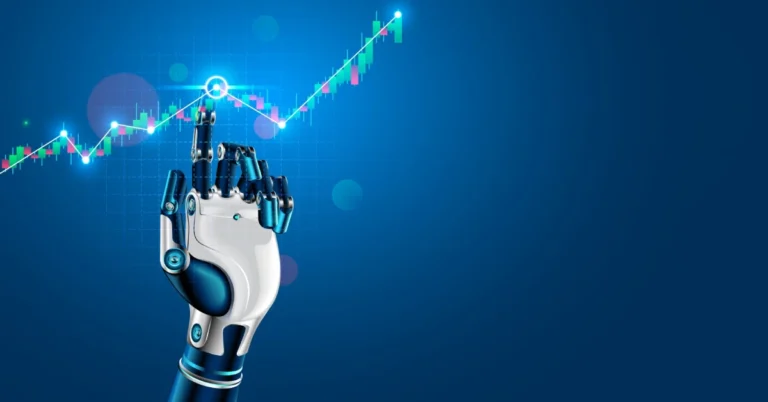Over the past few years, artificial intelligence has stepped out of the lab and into daily life, reshaping everything from healthcare to how we invest. These days, even first-time traders are turning to automated trading solutions for their trade ideas. artificial intelligence stock trading as a way to get into the market without spending hours glued to charts.
AI-driven trading platforms promise speed, accuracy, and the power to sift through mountains of market data in the blink of an eye, making them ideal for day trading. For new traders, that sounds almost too good to pass up, but it also raises an important question: Is this automated trading technology a safe starting point?
Understanding AI in Stock Trading
At its core, AI trading means using algorithms and machine learning models to scan data, spot patterns, and execute trades automatically. In other words, it’s like having a tireless bot watching the markets for you.
Powered by AI technology, these platforms can handle vast amounts of information from multiple sources, including market trends, economic indicators, and news sentiment, much faster than any human could.
Typically, AI stock trading systems combine deep learning for complex pattern recognition with natural language processing for reading news and social media feeds. They can operate continuously, adapt to changing conditions, and learn from previous Use trades to refine strategies over time and adapt to changing market conditions.. For beginners, this can make entering the stock market feel less stressful.
Benefits for Beginner Traders
Speed and Efficiency
AI can execute trades in milliseconds, allowing traders to take advantage of short-lived market opportunities through automated trading. This level of responsiveness is especially useful in volatile markets.
24/7 Market Access
Unlike human traders, AI systems never need rest. They can monitor global markets around the clock, ensuring no opportunity is missed due to time zone differences or off-hours.
Emotion-Free Decisions
Fear and greed are common issues for new traders. AI systems base their actions on data and predefined rules, avoiding impulsive decisions that can harm long-term performance in trading strategies.
Data-Driven Insights
By analyzing historical price movements, real-time news, and social sentiment, AI trading bots provide comprehensive market insights that can help guide investment strategies.
Risk Management Tools
Many AI platforms include built-in features like automatic stop-loss orders and portfolio diversification, helping beginners protect their capital while learning.
Key Risks and Limitations
Over-Reliance on Historical Data
AI predictions are based heavily on past market behavior, which may not always reflect future conditions, and sudden events can disrupt even the best algorithms.
Lack of Human Judgment
While AI is exceptional at data analysis, it lacks intuition and contextual understanding, which is crucial for developing effective trading strategies. Beginners may miss out on opportunities or fail to avoid pitfalls without human oversight.
Algorithm Transparency Issues
Some AI systems operate like “black boxes,” making it difficult for traders to understand why certain decisions are made.
Cybersecurity Threats
Like any online platform, AI trading systems aren’t immune to hacking, fraud, or data breaches, which could affect your brokerage account. A single security lapse could expose sensitive financial information or even compromise trading accounts.
Technical Failures
No system is perfect. Glitches, server outages, or connectivity issues can lead to missed trading opportunities or, worse, trigger unintended trades that result in losses.
Tips for Safer AI Stock Trading
For beginners, the safest approach is to treat AI as a tool, not a replacement for personal judgment. Begin with a demo account to test your trading strategies without financial risk. Consider using a demo account to practice with a trading bot before investing real capital. or start small to build confidence without risking too much capital through automated trading. Work only with licensed, well-reviewed platforms, and take the time to check their security protocols. Keep an eye on market trends, and regularly assess how the AI is performing to ensure it still supports your trading strategies.
Finally, continue learning — the most successful traders combine technology with their growing expertise in market conditions.
Conclusion
AI stock trading offers exciting opportunities for beginners, from faster execution to more informed decision-making. However, it also carries risks that should not be underestimated. By combining the strengths of AI with careful oversight and a commitment to learning, new traders can harness the technology’s potential while keeping their investments as safe as possible.

